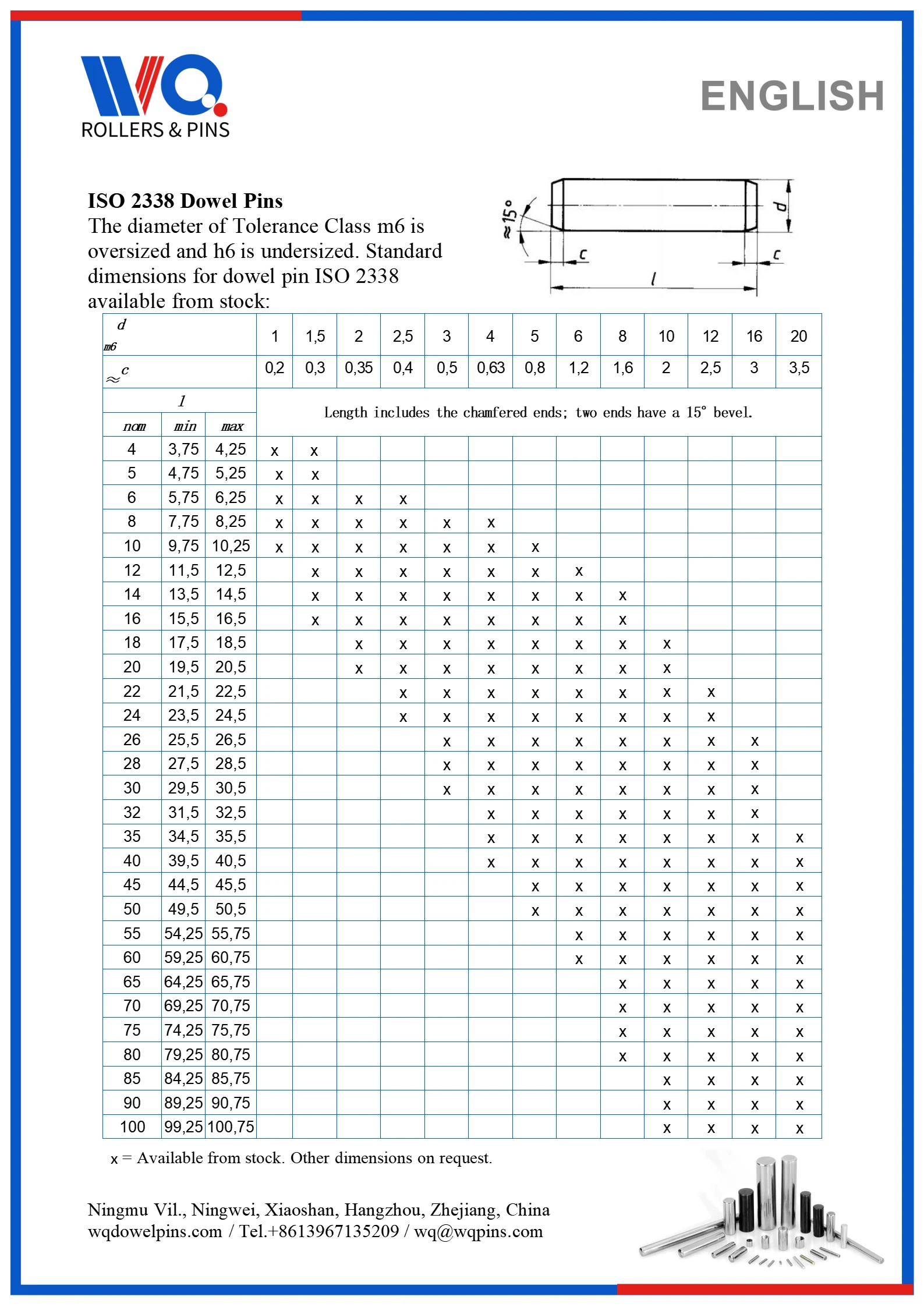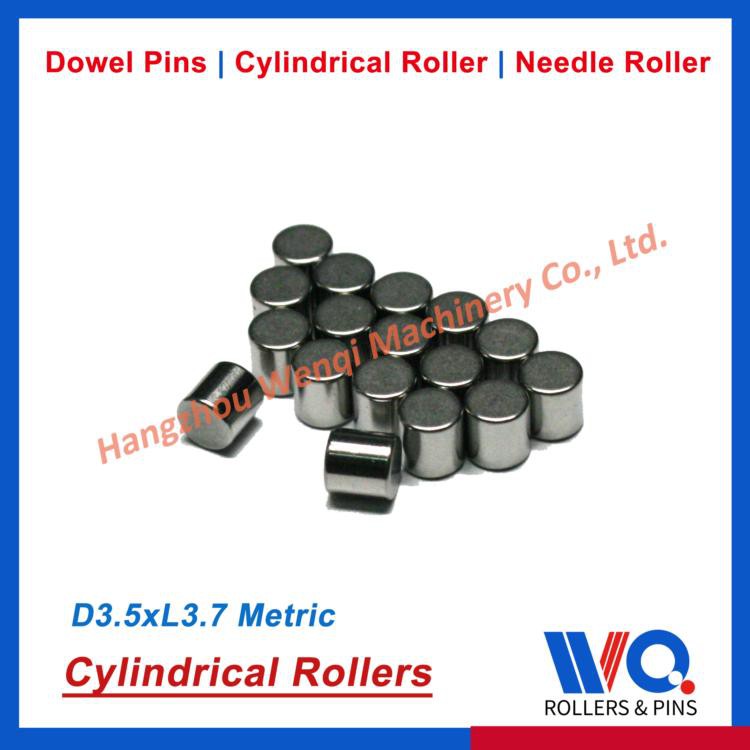ISO 8734 and ISO 2338 are both international standards that specify the dimensions, tolerances, and technical requirements for dowel pins. However, they apply to different types of dowel pins and are used in different applications. Below is a detailed comparison of the two standards:
ISO 8734: Parallel Dowel Pins (Hardened and Ground)
Scope: This standard specifies the requirements for parallel dowel pins made from hardened and ground steel.
Material:
Made from hardened steel, which is heat-treated to increase strength and wear resistance.
The pins are also ground to achieve a high level of precision and a smooth surface finish.
Surface Finish: The pins are precision-ground to very tight tolerances, ensuring a high-quality surface finish and exact dimensions.
Tolerances are much tighter than those specified in ISO 2338, making these pins suitable for high-precision applications.
Applications:
Used in applications requiring high strength, durability, and precision, such as heavy machinery, automotive assemblies, and aerospace components.
Ideal for situations where the dowel pins must withstand high shear or compressive forces.
Chamfer: The ends of the pins are chamfered for easier insertion. al.
ISO 2338: Parallel Dowel Pins (Unhardened)
Scope: This standard specifies the requirements for parallel dowel pins made from unhardened steel or stainless steel.
Material:
Typically made from unhardened steel (e.g., low-carbon steel) or stainless steel.
These pins are not heat-treated, so they are softer and easier to machine or modify after installation.
Surface Finish: The pins have a smooth surface finish but are not ground to the same level of precision as hardened dowel pins.
Tolerances are less strict compared to hardened dowel pins, making them suitable for general-purpose applications where extreme precision is not required.
Applications:
Used in applications where the dowel pins do not need to withstand high shear or compressive forces.
Common in light-duty machinery, fixtures, and assemblies where precision alignment is needed but high strength is not critical.
Chamfer: The ends of the pins are chamfered for easier insertion. al.
When to Use Each Standard
ISO 8734:Use these dowel pins for high-precision, high-stress applications where durability, strength, and exact alignment are essential. They are ideal for demanding environments like automotive, aerospace, and heavy machinery.
ISO 2338: Choose these dowel pins for general-purpose applications where high strength and precision are not critical. They are cost-effective and easier to machine or modify.




The choice between ISO 8734 and ISO 2338 depends on the specific requirements of your application. If you need a cost-effective solution for light-duty applications, ISO 2338 dowel pins are sufficient. However, for high-precision, high-strength applications, ISO 8734 hardened and ground dowel pins are the better choice. Always consider factors like load-bearing capacity, environmental conditions, and required tolerances when selecting dowel pins.









